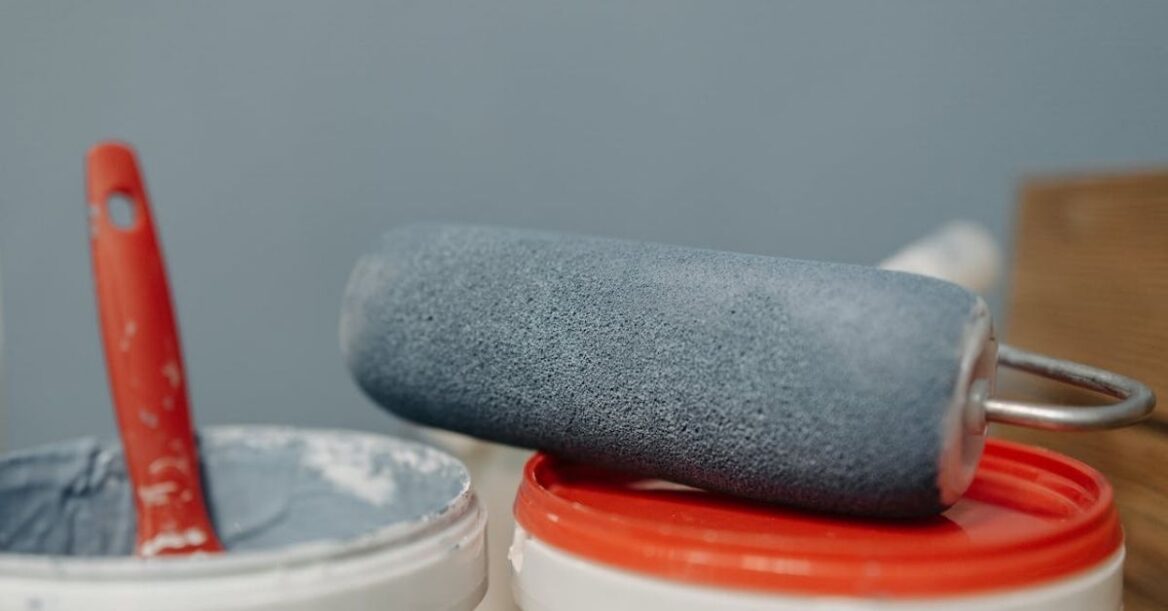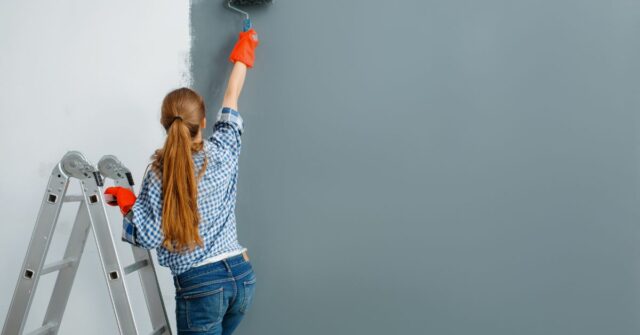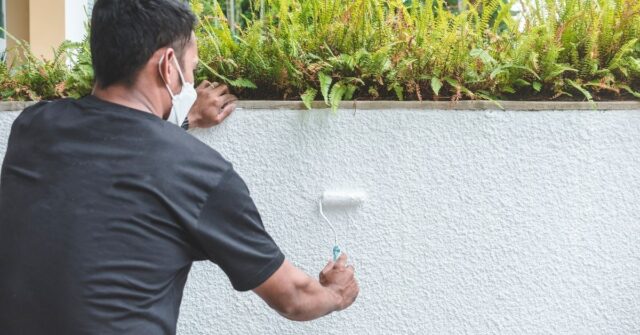It’s tempting. You’ve got leftover interior paint in the garage and a small outdoor project that seems like the perfect match.
But can you really use interior paint outside? The short answer is: not without problems. In this guide, we’ll break down why it matters where paint goes, what could go wrong, and what the pros actually do.
Whether you’re a DIY enthusiast or just trying to save a buck, understanding the difference is worth your time – and possibly your wall.
Understanding the Key Differences Between Interior and Exterior Paint
Interior and exterior paints might look the same on the shelf, but they’re built for totally different jobs. Using them interchangeably can cause headaches you didn’t bargain for. Let’s look under the lid.

Formulation and Chemical Composition
Interior paints are made for indoor comfort. They contain fewer additives and are designed for easy cleaning and smooth finishes.
Exterior paints, on the other hand, are engineered for battle. They include flexible resins and additives to resist sun, rain, wind, and everything Australia throws at your walls.
Trying to swap one for the other is like putting dress shoes on for a hike – bad idea.
Durability and Resistance to Weather
Interior paint doesn’t like extremes. It can’t handle UV rays, drastic temperature swings, or high humidity.
That’s why, when slapped on a shed or fence, it tends to peel, fade, and crack faster than you can say “weekend project.” Exterior paint is built tough.
It can expand and contract with the weather without throwing a tantrum.
Intended Use and Environmental Suitability
Interior paint is for rooms, ceilings, and surfaces shielded from the elements. It’s great at resisting stains and smells but lousy at braving storms.
Exterior paint has to deal with Australia’s scorching sun and coastal moisture. It’s got the muscle for it. That difference matters if you want your paint to last longer than a summer.
What Happens If You Use Interior Paint Outside?
If you’ve already painted your deck with leftover interior paint, brace yourself. While it may look fine on day one, trouble is brewing beneath the surface.
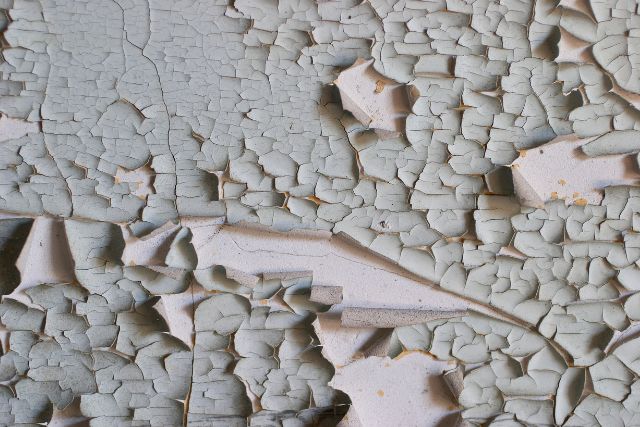
Fading, Peeling, and Cracking
Sunlight is paint’s worst enemy. Interior paints aren’t made with UV blockers. After a few weeks outdoors, colours start to fade like a pair of old jeans.
Soon after, the paint starts flaking and cracking. It’s like baking a cake and leaving it in the sun – eventually, it just falls apart.
Mildew, Moisture, and UV Damage
Moisture is another silent destroyer. Interior paint absorbs water more readily, and when it does, mould and mildew throw a party.
That’s not just unsightly – it can be a health risk. Combine that with UV damage, and you’re left with a bubbling, blotchy mess that begs to be redone.
Health and Environmental Concerns
Interior paints often have fewer protective additives because they don’t need them indoors. But when used outside, they can break down faster, potentially releasing chemicals into the soil or air.
Not great if kids or pets are around. The right paint keeps your surfaces safe – and your conscience clear.
Common Myths About Using Interior Paint Outdoors
Some folks think they can outsmart the paint aisle. Let’s bust a few popular myths that often lead to costly fixes.
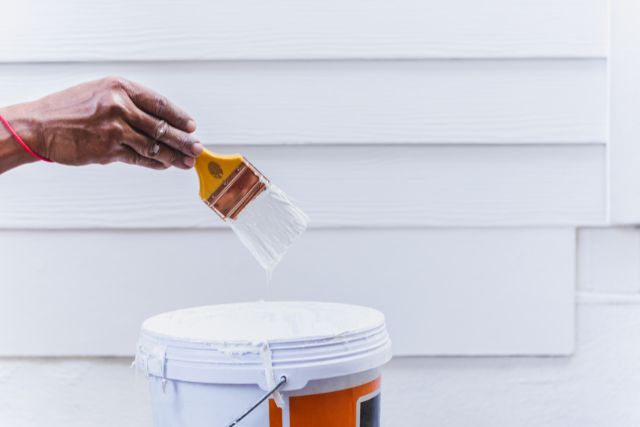
“Sealing It Makes It Okay”
Adding a clear coat or sealer over interior paint might sound clever. It’s not. Sealers can delay the damage, but they can’t change the core ingredients of the paint underneath.
It’s like putting sunscreen on top of a snowman – eventually, it’s going to melt.
“It’s Fine for Small Outdoor Projects”
Even small projects suffer when coated with the wrong stuff. Whether it’s a birdhouse or a garden chair, interior paint won’t hold up.
You’ll end up repainting more often, costing more in time and money than if you’d just picked the right paint in the first place.
“Leftover Paint Shouldn’t Be Wasted”
We get it. Throwing away half a can of paint feels wasteful. But using it outside isn’t the answer.
Consider donating it, using it for indoor touch-ups, or recycling it properly. Your deck – and your future self – will thank you.
Expert Advice: Why Professionals Don’t Recommend It
Every experienced painter knows: use the right tool for the job. And paint is no different. Here’s what the pros have to say.

Manufacturer Warnings and Industry Standards
Check any reputable brand’s label or website. They’ll tell you flat out: interior paint is not made for exteriors.
Warranties won’t cover you, and failure is expected. There’s a reason paint is divided into indoor and outdoor categories – it’s not a marketing gimmick.
Real-World Performance Issues
Professionals have seen it all – blistering walls, paint that washes off in the rain, and customers scratching their heads.
They avoid interior paint outdoors, not because they’re picky, but because experience teaches hard lessons. When you hire a painter, you’re also paying for what they know not to do.
What to Do Instead: Choosing the Right Paint for Outdoor Projects
So what’s the solution? Use the right paint from the start. Here’s how to do it right.
When to Use Exterior Paint
Exterior paint is your go-to for anything exposed to the elements. This includes fences, decks, walls, cubby houses, and furniture that lives outdoors.
Even if it’s partly covered, if the sun or rain can touch it, it needs exterior-grade protection.
Types of Exterior Paint and Their Benefits
Acrylic exterior paints are popular for their durability and low maintenance. Oil-based options offer a tough finish but take longer to dry.
Some paints include mould resistance or UV blockers. Read labels and choose based on your project’s needs, not just the colour.
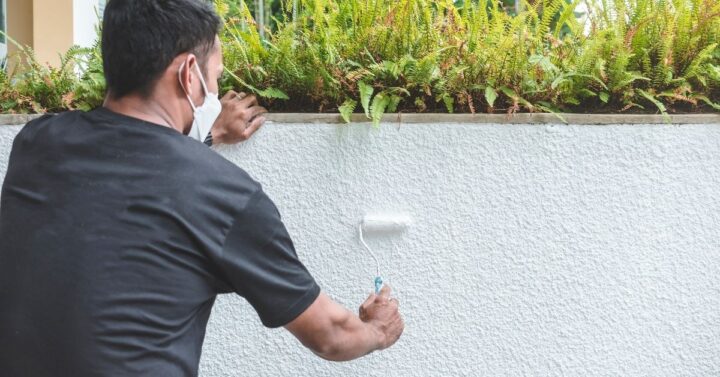
Tips for Proper Surface Preparation and Application
Prep is everything. Clean the surface, sand where needed, and prime if required. Apply paint in mild weather – avoid extreme heat or rain.
Use the correct tools for a smooth finish. One good coat beats three rushed ones. Take your time, and the results will stick around.
Frequently Asked Questions
Still have questions? You’re not alone. Here are answers to the most common ones we hear.
Can I Mix Interior and Exterior Paint?
You can – but don’t. It weakens the qualities of both and leads to unpredictable results. Think of it like mixing sunscreen with moisturiser – it might feel okay, but it won’t do either job well.
Is There Ever a Safe Exception?
Rarely. Some very sheltered spots, like covered porches, might get away with interior paint, but the risks still outweigh the savings. If you have to ask, it’s probably not worth it.

How Long Will Interior Paint Last Outside?
Not long. A few months at best before signs of wear show. In harsh weather, it could fail in weeks. You’ll spend more fixing the damage than you saved using leftover paint.
Final Thoughts: Use the Right Paint for the Right Job
It’s easy to underestimate how different interior and exterior paints really are. But the truth is, paint made for inside won’t last outside.
Not because it’s low quality, but because it’s built for a different task. Whether you’re painting a fence, a wall, or a cubby house, choose the paint designed to handle what nature throws at it.
Save your indoor paint for the lounge, and let your outdoor surfaces shine with the strength they need.

